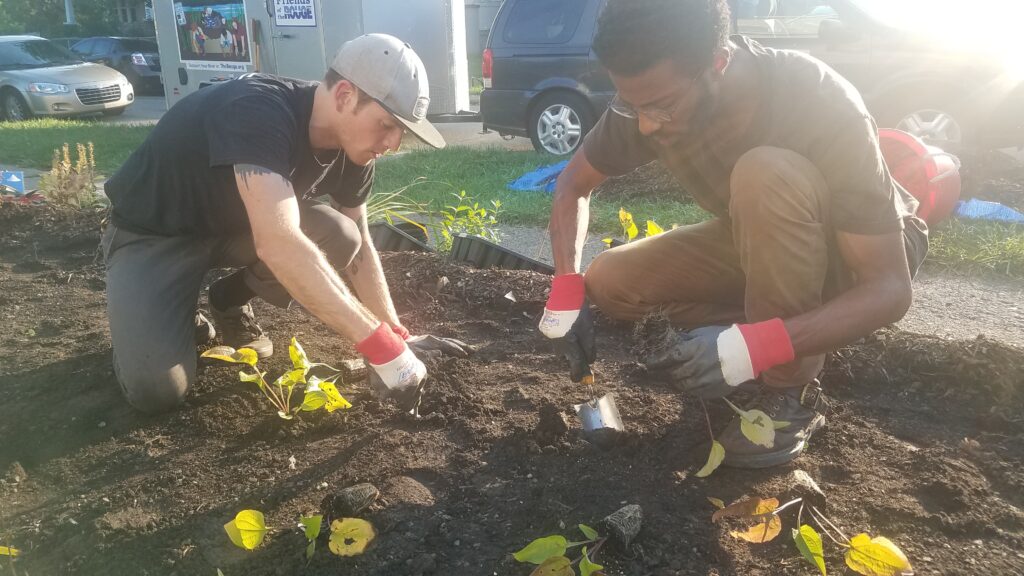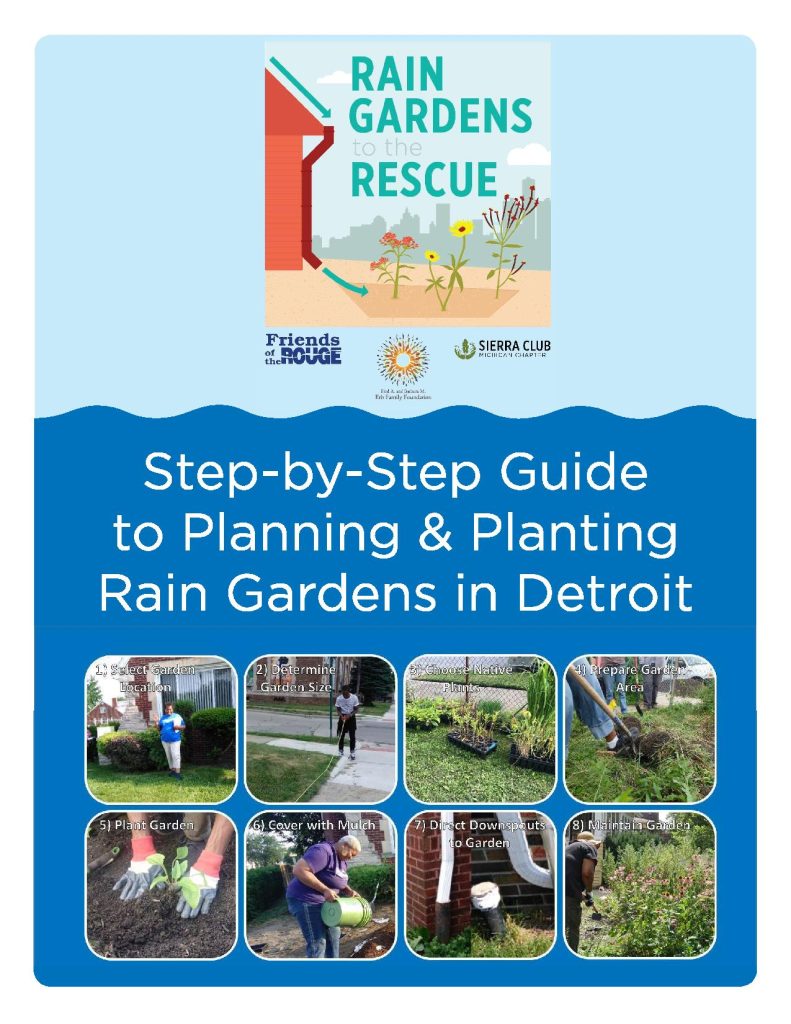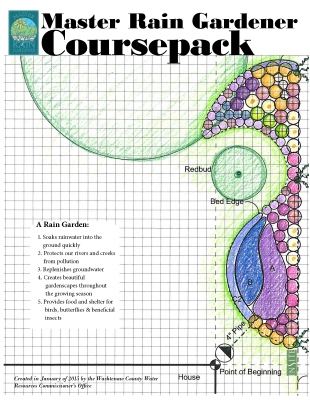What is a rain garden?
A rain garden is a garden with a purpose – to soak up rain water! A rain garden is designed as a shallow depression in the ground, planted with native plants, that holds rain water on site temporarily so that it soaks into the soil rather than running off into storm drains. This helps keep our rivers clean by preventing excess water and pollutants from entering the river when it rains. Rain gardens also usually feature beautiful native wildflowers that attract butterflies and hummingbirds.
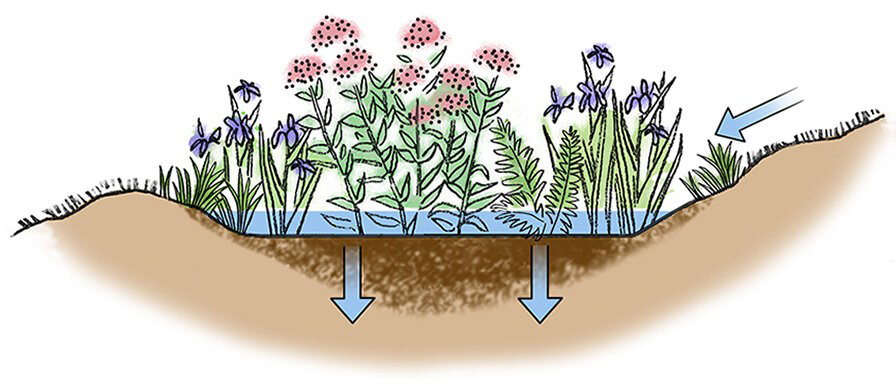
Ready to create your own rain garden?
Below you’ll find two step-by-step design manuals for Michigan Rain Gardens. Each takes a different approach, so pick the one that best serves your needs. Look further down for more resources to help you get started.
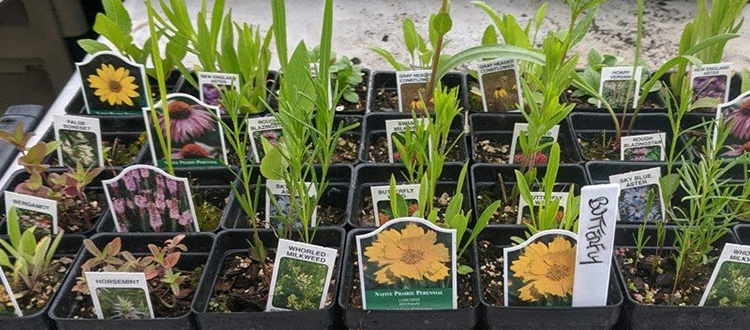
Plants for Rain Gardens
Not sure where to start when it comes to rain garden plants? We have some recommendations!
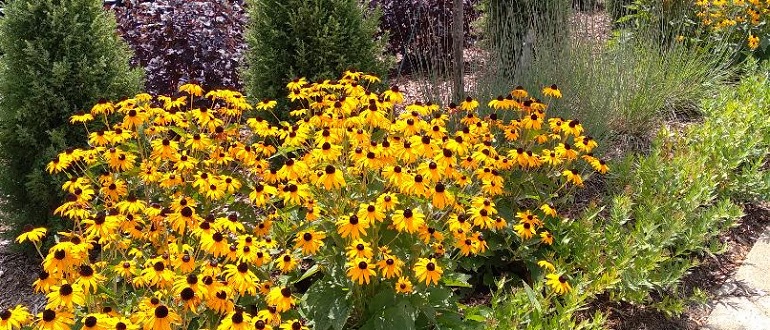
Master Rain Gardener Course
Let rain garden experts teach you everything you need to know. This video series walks you through the design and installation of your very own rain garden and provides helpful resources along the way!
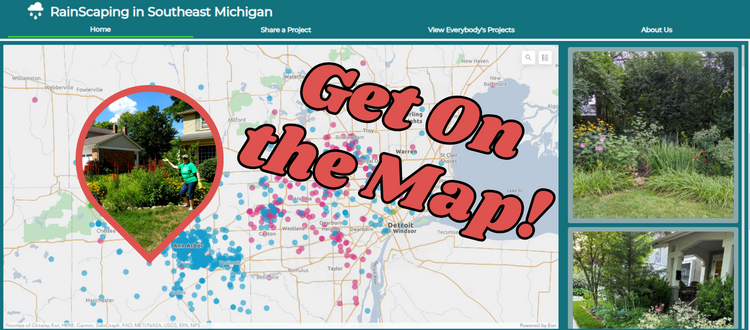
Rainscaping Map
See a map and photos of rain gardens, habitat gardens, rain barrels, and more in your community. Add your project to the map when you’re done!

More Resources
Explore some more plant and gardening resources.
Rain Garden Tips
The installation tips below are adapted from the Washtenaw County Master Rain Gardener program, created by Susan Bryan, Harry Sheehan and Shannan Gibb-Randall.
Sizing
A rain garden should be about a fifth of the size of the rooftop or paved area draining to it and be deep enough to pool 3″ of water. For example, if you have 500 square feet of rooftop draining to a downspout, the garden should be 100 square feet (10×10) and 3″ deep.
Location
Rain gardens are intended to infiltrate rain water to the ground, not into your basement. Gardens should be located downhill and at least 10 feet away from your foundation (and your neighbor’s!). Constantly wet areas are also not great for rain gardens since they don’t drain well. Consider native wetland plants such as ferns, iris, milkweed, and blazing star in these locations.
Maintenance
Expect to water your rain garden regularly for the first growing season to reduce plant mortality and speed root development. After the first year, native plants only need to be watered during very dry weather. Weeding is also most critical in the first season or two. After that, weeds should compete poorly and will likely mostly appear at the edges.
Overflow
The goal for a rain garden is to capture the first 1/2″ of runoff, but rain gardens are designed to overflow during heavy rains that exceed this. Make sure the overflow water will be directed to a safe distance from sidewalks, property lines, and retaining walls.
Plants
Fill your garden with native Michigan plants! Seeds often get washed out of rain gardens before they can establish, so it is generally recommended to plant with seedlings. Use more plants to help your garden fill in faster and to reduce space for weeds.
Costs
Prices vary widely for rain garden installations, but in general you can expect to pay around $2/square foot if you do it all yourself, $5-8/sq ft if you hire a landscaper to dig, and $15/sq ft if you hire out the design and construction.
Video Resources
Learn how to disconnect your downspout so that it can be directed to your garden.
Learn how to plant your rain garden.
Want to hire a professional for your rain garden?
Friends of the Rouge Designers
Our team of landscape architects and designers is ready to help you plan your rain garden or other improvements to your landscape to maximize environmental benefits.
Other Rain Garden Professionals and Suppliers
Find companies that sell native Michigan plants, design rain gardens, install them, or all of the above.
